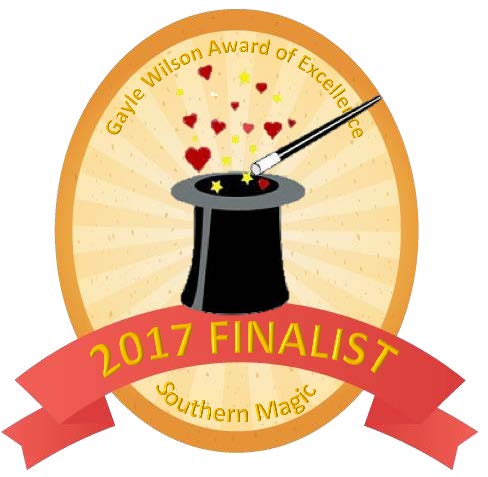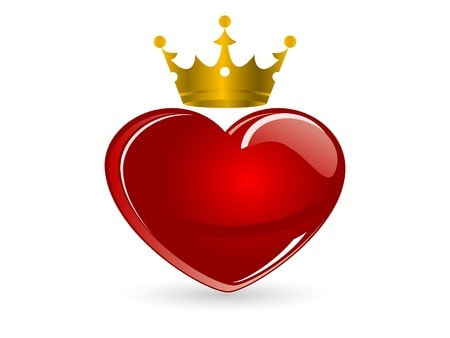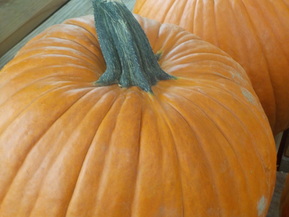 HAPPY HALLOWEEN! HAPPY HALLOWEEN! Several families mentioned throughout Clingstone were actual families that were arrested: For example, Rebecca Jane Farr and her husband Samuel did exist and had a young son named Jonathan. Then there were individuals and families that I constructed purely from my imagination. There are plenty of on-line data bases that can provide period-specific names, but I developed my minor characters’ names another way. This might be a morbid behind-the-scenes peek that no one wants to know, but I compiled my list of names two ways: firstly, from a passenger manifest dating from the mid-nineteenth century, which unfortunately was archived because the ship sank; and secondly, from gravestones. Hey, I warned you it was a bit morbid, but there’s nothing more authentic than walking through a cemetery and seeing firsthand the names that were popular in the early 19th century. There’s a lovely old cemetery on the outskirts of the small town where I live and where I often walked my Golden Retriever when I was writing the first draft of Clingstone. Some of the oldest tombstones in that graveyard date back to the first decade of the 19th century. During my research for names, I mixed and matched first and last names for the sake of anonymity, but by using actual names from that time period, I was able to achieve a level of authenticity that would have been missing had I simply plucked names from my imagination. And of course, since many supporting characters mentioned throughout Clingstone were in fact actual people, like General Garrard and Dr. Mary Walker, they essentially wrote themselves. I think Dr. Walker in particular was a rather fascinating historical figure; had they met under different circumstances, I think Mae and Dr. Walker would have had a cordial relationship instead of a contentious one. Both were stubborn women with strong opinions and even stronger loyalties. Other than being on opposite sides of the war, they had much in common. Want to learn more about two of the historical figures mentioned in Clingstone? Click here for General Garrard and here for the very no-nonsense Dr. Mary Walker.
0 Comments
 I once owned this fantastic reference book, the specific title of which alludes me now, but I believe it was titled something along the lines of Baby Names from Around the World. Each chapter was dedicated to a specific country or tribe, and it was a cornucopia of authentic names that dated back centuries. I adored that book. It’s how I came up with Creighton’s name, after all. I was thumbing through the specific chapter dedicated to Scotland (because I have a terrible weakness for Scottish heroes, and though Creighton was to be an American, in my mind he was going to be second or third generation Scots-American), and I read the name “Creighton” and bam! I instantly knew that would be my hero’s name. I can’t remember its meaning now, but I do remember that it had been around for a few centuries. It might have even originated from a family surname, but I honestly can’t remember the specifics. Unfortunately, I loaned my reference book of baby names to a friend of mine who was pregnant, and I never saw my lovely little book again. It was mislaid somewhere, or she loaned it out to someone. Hey, sometimes things like that can happen with pregnancy brain, and it’s no one’s fault. Either way, adios, that was the end of my reference book. I obtained Mae’s and Owen’s names from the same book, although I can’t remember the specific section anymore. Odds are it was either the British or American section. In case you’re wondering why my brain is so fuzzy about their origins, I wrote the first draft of Clingstone eight years ago! Sometimes it’s hard to believe I’ve been fine-tuning this book, in way or another, for so many years now. I wanted my heroine’s name to be simple and only one syllable since my hero’s name was a bit more unique. I loved the simplicity of her name, and that’s why I chose it; the same logic applied to Creighton’s ornery little nephew, Owen. It’s all about the balance. Ironically, my friend who borrowed my book named her son “Owen.” How’s that for serendipity? As for the origins of all those secondary characters…I’ll save that for next week’s post, but here’s a hint to tide you over until then: It involves cemeteries! Jeez. That last post was a big ol' pity party, wasn't it?
I received my proof from Amazon today and yep, the paperback cover of Clingstone is still much too dark, but guess what? I'm not going to let it bother me anymore. I'll only drive myself bonkers striving for perfection. After having some time to reflect upon matters, I'm perfectly happy with my slightly too dark cover. What's more, my cover still bleeds onto the spine, but this time it's only 1/16 of an inch. And weirdly, the culprit is the front cover this time and not the back...which makes no sense to me since I didn't even mess with the front cover when I reformatted it. But oh well! We can't have everything, can we? It's darn good just as it is, and I still think I've got a pretty good shot at getting my foot in the contest door, so to speak. Now I'm off to approve my cover one final time and then I'll order my copies to send to RWA. Hooray! All is well. I'm an optimist again! Which is fantastic news, because being a pessimist sucks. 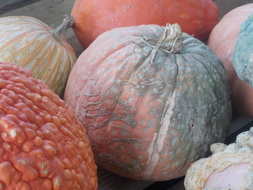 I’m still gathering my ducks in a row in order to compete in the 2017 RITA contest. Unfortunately, the spine on my paperback edition of Clingstone is off by about 1/8 inch, which means a portion of the back cover carries over onto the spine. One might not think 1/8 inch is significant, but it came across as a glaring eyesore when I received my proof. And to add to this headache, my proof printed mysteriously dark, to the point that Mae’s image loses much of its detailing. I did some research about changing the color mode from RGB to CMYK and did this, but it didn’t seem to fix the problem. I’m not sure what to do at this point. I did correct the spine issue and resubmitted it, and I should receive another proof on Thursday so I can check over everything again. Even if the book cover is still printing dark, I think I’m going to have to just approve it. The entry date for the contest is looming; the time for troubleshooting has passed. Sigh. It’s all rather disappointing. And irritating. I redesigned my entire cover so my book would not only reflect Mae and Creighton’s romance, but also so it would present a more professional package. I realize my book will be judged on its story, and not on the cover, but let’s be honest: A book is judged by its cover, at least partially. It’s annoying that I can’t figure out why it’s printing so dark, but I think I’m just going to have to learn to let the problem be. Issues like this one drive me batty, and I have a very difficult time throwing my hands up in surrender and saying, “Well, that’s good enough, I guess. Time to move on.” Simply put, "good enough" isn't good enough at all. I want my cover to be my very best, but I understand that there comes a point when I must recognize that it’s time to stop correcting every minuscule thing and simply learn to be happy with what I have. I'm not a perfectionist by any means, but sometimes I wish I were a bit less fixated on the flaws. Regardless, I need to send RWA my five copies in two weeks, so I'm limited on fine-tuning at this juncture. 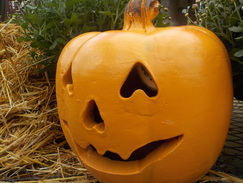 I finally joined Romance Writers of America. I’ve been meaning to for a while now, but I’m a stingy sort when it comes to certain purchases, and so I had to persuade myself to part with the $124 required to become a new member. Maybe it’s crass of me to mention the annual membership price and that I think it’s a tad too high, but there you have it. I work in social services and $124 is nothing to sneeze at from my point of view; nonetheless, I gritted my teeth and told myself that I’m investing in my writing career, and I would’ve just spent that money on food anyway. Or clothing. Or shelter. Who needs those things? Oh, wait…we all need those things, but hey! Now I’m a bonafide starving artist. Okay, so I’m being a smidgen melodramatic, but being melodramatic is so much fun, wouldn’t you agree? Anyway, back to my recent membership to RWA and why I joined. For starters, I’m hoping it will help me stay focused on my writing career by providing some much-needed resources and networking, but my primary motivation are the contests and the publicity they can offer. I realize my chances are slim to none considering I’m self-published and thus far have zero name recognition from a marketing standpoint, but I want to enter Clingstone in the 2017 RITA competition. The contest opens November 1st; that leaves me three weeks to get my ducks in a row and order my copies through Amazon. RWA requires the paperback edition of a book for judging, and five copies total. And of course an entrance fee. Again, that’s more money invested for an outside chance at placing in the contest, but I’ve always liked the allure of impossible outcomes. After all, chances in a million are still chances. 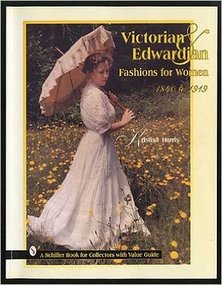 One of the things I love the most about writing historical romances are the fashions my heroines get to wear. Which might seem odd, since my heroines tend to be working-class women, like Mae Parrish, or destitute and in possession of one measly dress, like my current heroine, Juno Brock. Instead of stunning damask skirts and prettily embroidered undergarments, my humble heroines wear ugly paisley dresses and practical linsey-woolsey skirts, which completely undermines the purpose of a book like Victorian & Edwardian Fashions for Women. Or does it? I think what I like the most about this book is that it’s written for collectors, and so it goes into meticulous detail about bodice lines, sleeve lengths, and fabrics, which on the surface might sound tedious, but it’s not. Of particular interest to me as a romance writer is, ahem, the endless detail Ms. Harris goes in to describing women’s undergarments, from crinoline petticoats, bustles, and corsets, to drawers and embroidered stockings. It’s fantastic fodder for the imagination to ponder petticoats made of yards and yards of fabric and bedecked in scallops and ribbons and lace, and the commitment the hero has to actually make in order to remove said yards of fabric from the heroine. Hanky-panky in the 19th century required a lot of determination! Unfastening all of those hooks and buttons and cinched ribbons before the mood faded must’ve been a real challenge. Each chapter of Victorian & Edwardian Fashions for Women is divided into a specific decade and focuses solely on those particular fashions. Not only does Ms. Harris include historical fashion plates and photographs, but she also shows off her own collection. Most of the dresses modeled throughout appear to be relatively simple frocks, but the sketches and fashion plates depict the more glamorous fashions. Included too are old advertisements and illustrations from Harper’s Bazar and Godey’s Lady’s Book, which were the fashion magazines of their day. Visually, it’s a nice overview on several decades of fashion for any author who writes historicals, or even any reader who would love to see actual photographs of the dresses so many of us read about in romance novels. It also helps us appreciate our modern Hanes bras and cotton underwear! After all, our 19th century counterparts didn't have it easy in a lot of ways. Those antique dresses might be beautiful, and getting to wear one for an hour or so might be thrilling, but then steer me to the nearest pair of sweatpants and a soft t-shirt, thank you very much. Interested in learning more? This book is still available for sale on Amazon by clicking here. The winners of the September ebook giveaway are Lorraine Dye and Sasha Merton! Congratulations Lorraine and Sasha!
This month’s contest is for a free ebook copy of Clingstone (provided as an Amazon gift). Two winners will be selected, each to receive 1 ebook copy. The contest runs throughout the entire month of October and is open to all participants. Simply submit the Giveaway form on this website. The winners will be announced in my blog post on November 1st. Good luck! *Names and emails are for contest purposes only. All contact information will be deleted after the contest ends. The winners' contact information will be deleted once Amazon confirms the ebooks were claimed. |
Marti Ziegler
|


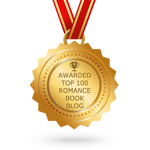
 RSS Feed
RSS Feed

